First, translates are additive. So your panel may not be tall enough to show the second rectangle. See the following code and comments.
graphics.setColor(Color.RED);
graphics.translate(0, 150); // 0,0 is now at 0,150
graphics.fillRect(0,0,65,65);
graphics.translate(0, 150); // 0,0, is now at 0,300
graphics.fillRect(0,150,100,65); // 0,150 is drawing at
// 0,450 with a size of 100,65
Since you are new to painting I will provide more information that may be of use.
- don't subclass
JFrame. It is a top level class meant to hold other components. Subclass JPanel and add that to it. Or create another class that subclasses JPanel.
- override
paintComponent(Graphics g) for doing your painting.
- call
super.paintComponent(g) first to process parent method bookkeeping
- As a general rule, I find it helps to fill the object first then do the outline/border. It will simply overwrite the original figure with the outline.
- it is considered standard practice to override
getPreferredSize so other areas may not arbitrarily change the size.
- call
frame.pack() to size the frame and layout the components.
public class RectanglesExample extends JPanel {
JFrame f = new JFrame("Rectangles");
public static void main(String[] args) {
SwingUtilities.invokeLater((()->
new RectanglesExample()));
}
public RectanglesExample() {
setBackground(Color.WHITE);
f.add(this);
f.setDefaultCloseOperation(JFrame.EXIT_ON_CLOSE);
f.pack();
f.setLocationRelativeTo(null);
f.setVisible(true);
}
@Override
public Dimension getPreferredSize() {
return new Dimension(400, 700);
}
public void paintComponent(Graphics g) {
super.paintComponent(g);
Graphics2D graphics = (Graphics2D) g.create();
graphics.setColor(Color.RED);
graphics.translate(0, 150);
graphics.fillRect(0,0,65,65); // First rect at 0,150
graphics.translate(0, 150);
graphics.fillRect(0,150,100,65); // Second rect at 0,450
graphics.dispose();
}
